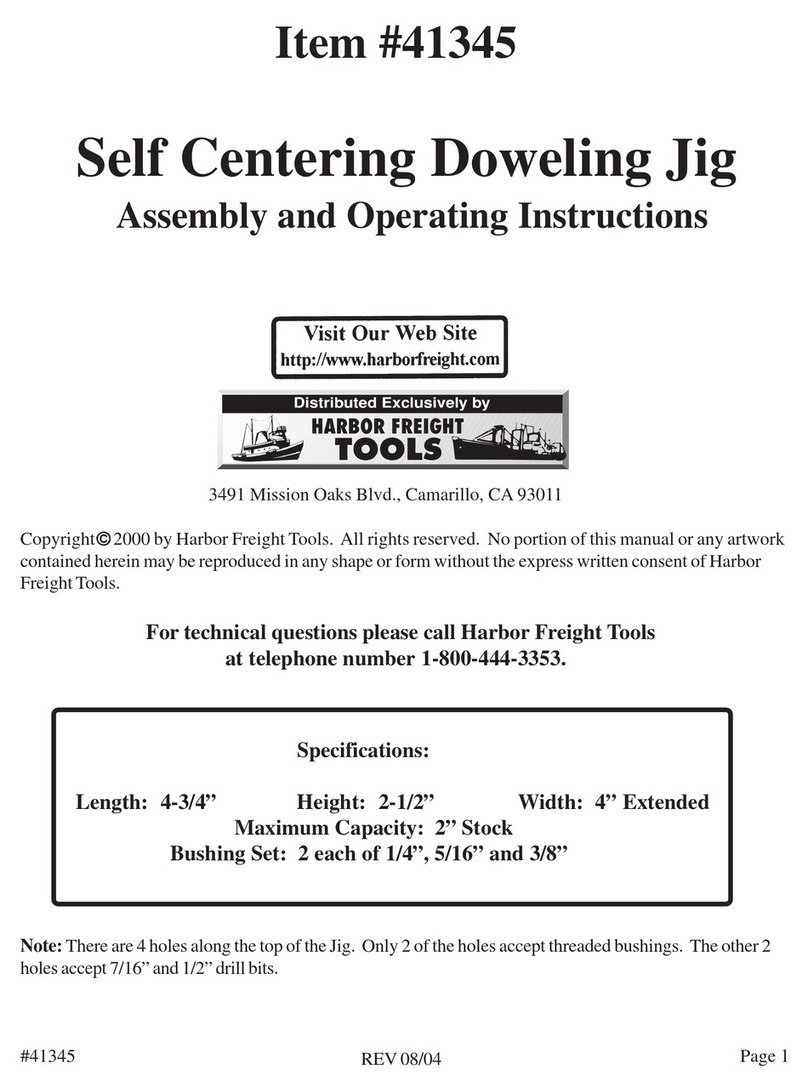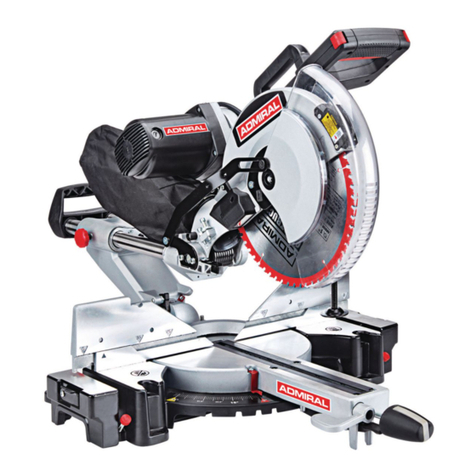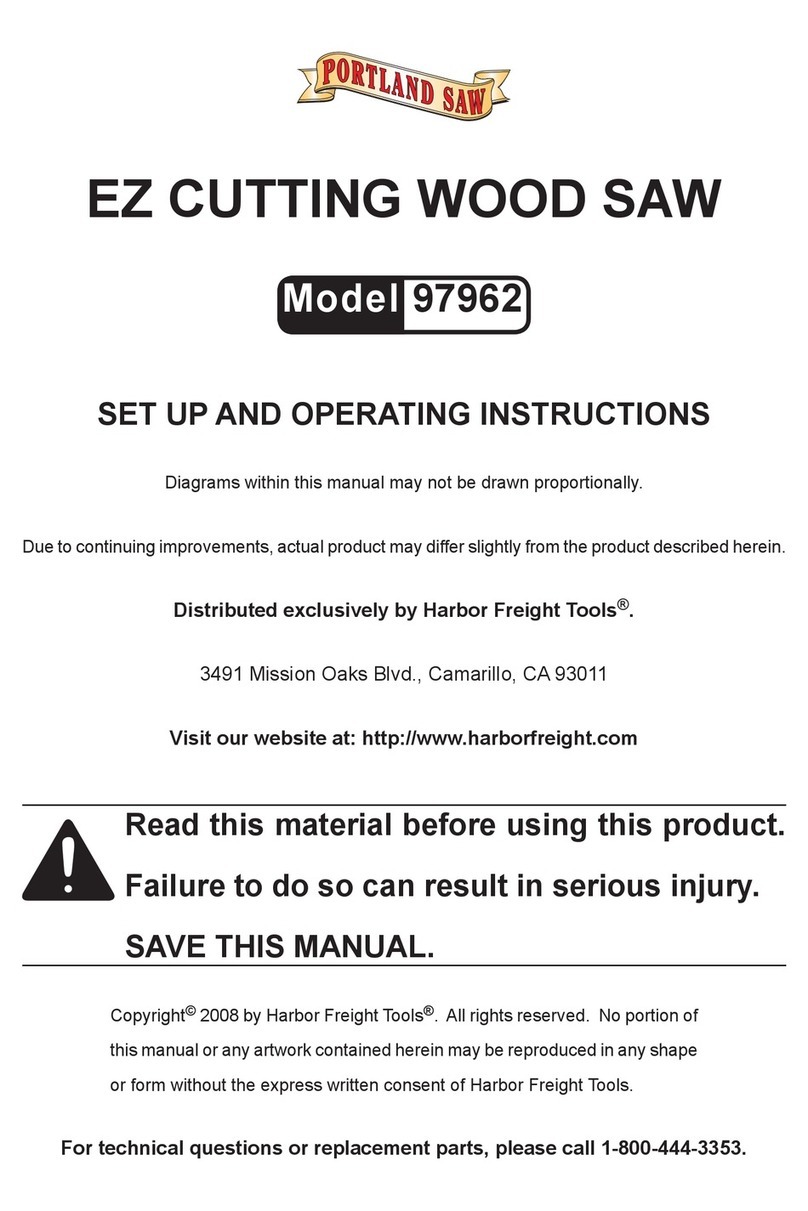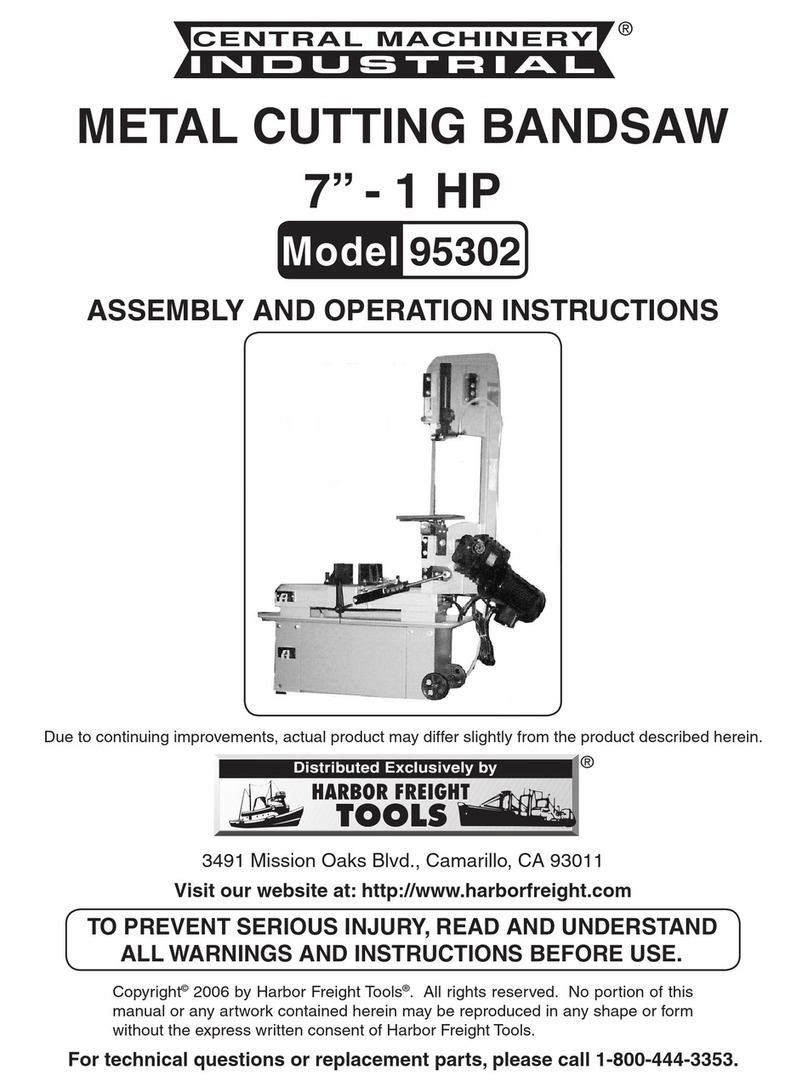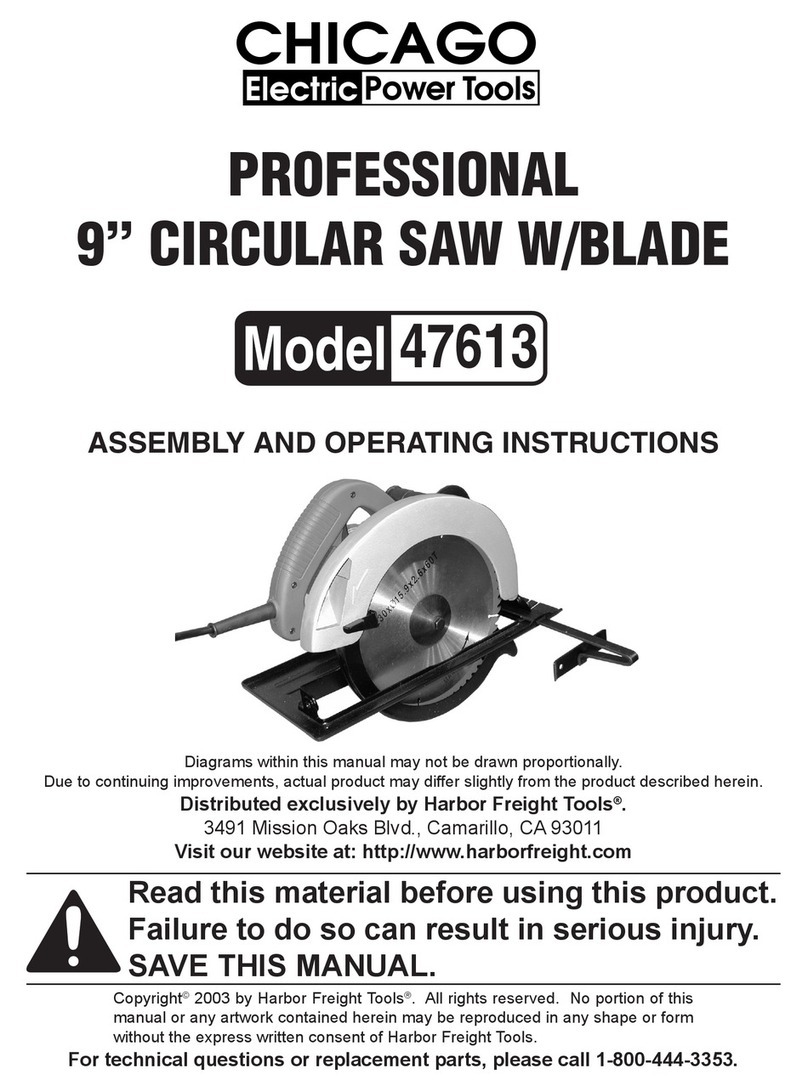
Page 6
SKU 93675 For technical questions, please call 1-800-444-3353
18. When cutting a large workpiece, make sure its entire length is properly supported. If
necessary, use a roller stand (not included).
19. Do not lean on the Band Saw when the tool is in its upright position.
20. When moving the Band Saw, always have its Head lowered to its horizontal position
and secured in place.
21. Allow the Saw Blade to rotate to full speed before lowering the Saw Blade onto the
workpiece. When turning off the Band Saw, allow the Saw Blade to spin down and
stop on its own. Do not press against the Saw Blade to stop it.
22. To avoid accidental injury, always wear heavy duty work gloves when changing the
Saw Blade.
23. The Saw Blade will become hot while cutting. Allow the Saw Blade to completely cool
before handling.
24. Do not force the Saw Blade into the workpiece when cutting. Apply moderate
pressure, allowing the Saw Blade to cut without being forced.
25. Turn off the Band Saw and allow the Saw Blade to completely stop if the Saw Blade is
to be backed out of an uncompleted cut.
26. Never attempt to remove material stuck in the moving parts of the Band Saw.
27. Always unplug the Band Saw from its electrical outlet before performing inspection,
maintenance, or cleaning procedures.
28. Keep this product and all other tools and equipment away from children and animals.
Do not allow spectators in the work area.
29. Keep all safety guards in place and in proper working order.
30. This Band Saw is designed for indoor use only.
31. Make sure the workpiece to be cut off has sufficient room to move sideways. Failure to
do so may result in offcut binding against the Saw Blade.
WARNING! People with pacemakers should consult their physician(s) before using
this product. Operation of electrical equipment in close proximity to a heart pacemaker
could cause interference or failure of the pacemaker.
WARNING! Some dust created by power sanding, sawing, grinding, drilling, and
other construction activities, contain chemicals known (to the State of California) to
cause cancer, birth defects or other reproductive harm. Some examples of these chemi-
cals are: lead from lead-based paints, crystalline silica from bricks and cement or other
masonry products, arsenic and chromium from chemically treated lumber. Your risk
from these exposures varies, depending on how often you do this type of work. To
reduce your exposure to these chemicals: work in a well ventilated area, and work with
approved safety equipment, such as those dust masks that are specially designed to
filter out microscopic particles.
(California Health & Safety Code 25249.5, et seq.)

